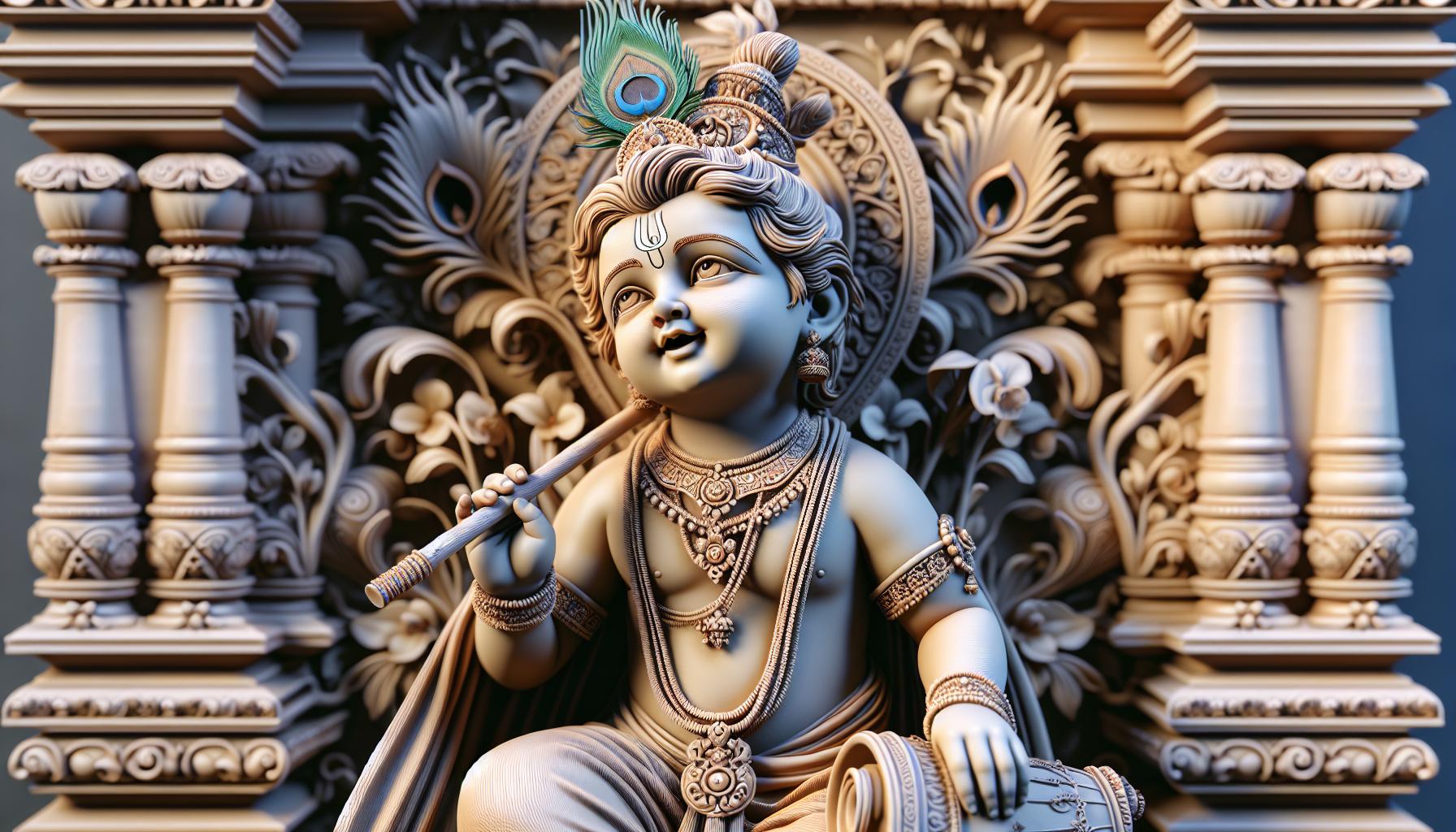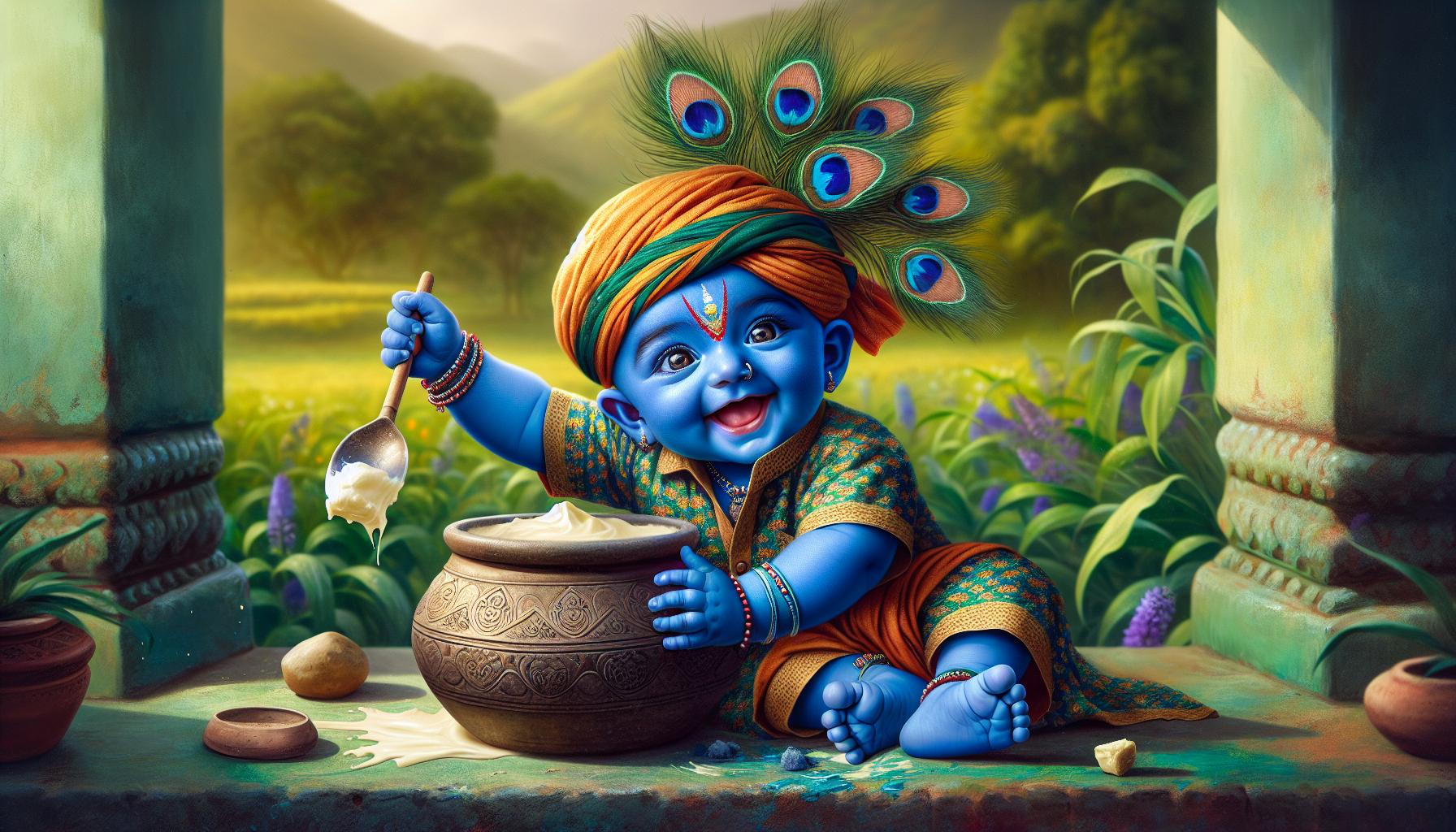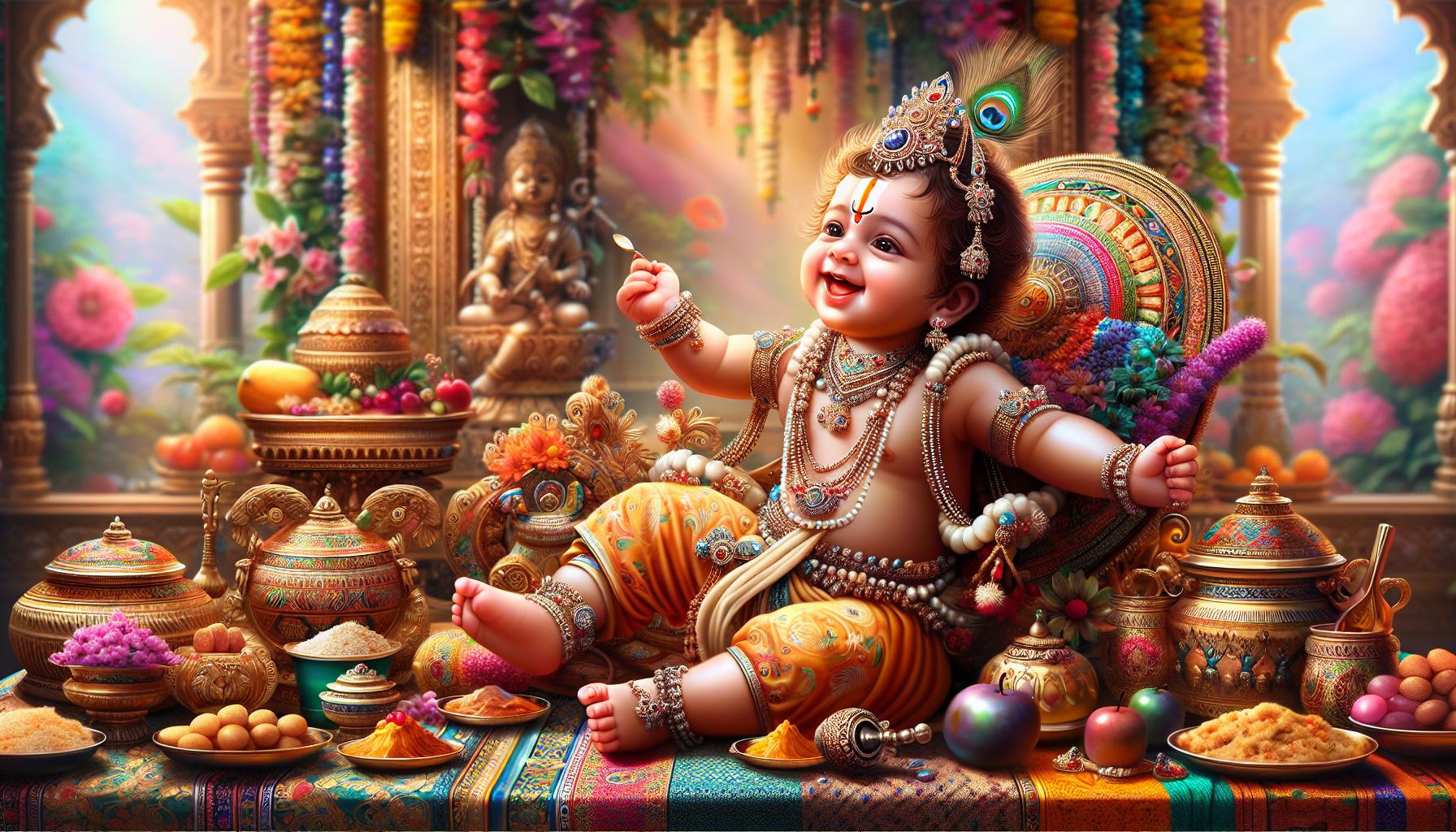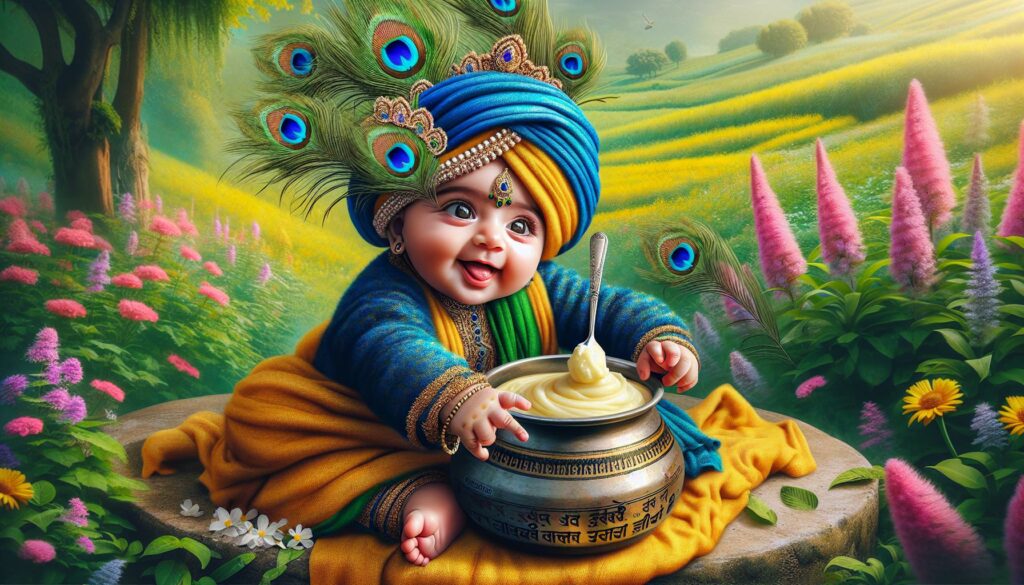When I think of the divine charm of baby:qhosx4pgelq= krishna images, my mind instantly fills with enchanting images of his playful youth. baby:qhosx4pgelq= krishna images, with his mischievous smile and captivating antics, holds a special place in the hearts of devotees. These images not only capture his innocence but also symbolize love, joy, and the essence of devotion.
Exploring the world of baby:qhosx4pgelq= krishna images reveals a rich tapestry of art that spans centuries and cultures. Each depiction tells a story, evoking emotions that resonate deeply with those who admire them. Whether it’s the classic butter thief or the serene child playing with his friends, these images inspire a sense of wonder and spiritual connection. Join me as I delve into the beauty and significance of baby Krishna imagery, and discover how these visuals can enrich our understanding of this beloved deity.
- Divine Charm: Baby Krishna images encapsulate the playful innocence of the deity, symbolizing love, joy, and devotion, making them beloved by many devotees.
- Cultural Significance: These depictions serve as artistic representations of Hindu spirituality, evolving across centuries while reflecting local customs and traditions.
- Symbolism in Art: Key elements like the butter pot, flute, and peacock feather highlight Krishna’s characteristics of love, harmony, and connection to nature.
- Visual Appeal: Bright colors, intricate details, and expressive features characterize baby Krishna images, making them visually captivating and emotionally resonant.
- Online and Offline Resources: Numerous platforms, both online (like Etsy and stock photo sites) and offline (local temples and art galleries), offer a rich variety of baby Krishna imagery for enthusiasts and collectors.
Baby:Qhosx4pgelq= Krishna Images
Baby:qhosx4pgelq= krishna images often feature him in various playful and innocent poses. These visuals capture his divine playfulness and the charm that resonates with many devotees. Artists portray baby Krishna in moments of mischief, playing with butter or frolicking with his friends. Each image carries a narrative element that reflects the rich tapestry of Hindu mythology.
Cultural significance surrounds these images as they embody love, joy, and devotion. Many collectors seek out these artistic representations, appreciating the craftsmanship and emotion involved. The diverse styles, from traditional paintings to modern digital art, showcase the evolving depiction of baby Krishna while maintaining his traditional essence.
Iconic elements, such as the peacock feather and flute, often accompany baby Krishna’s images. These symbols contribute to the identity of Krishna as a playful and loving deity. Engaging with these images offers insight into the spiritual connection devotees share, as each depiction resonates on a personal level. Significantly, these visuals not only serve as decorative art but also as profound reminders of the qualities Krishna represents.
Significance in Art and Culture

The portrayal of baby Krishna holds a prominent place in art and culture, celebrated for its rich symbolism and historical significance. This section explores the historical context of these images and their symbolic meanings in artistic representations.
Historical Context
Baby Krishna’s imagery traces back to ancient texts, with depictions rooted in Hindu mythology. Early artistic representations emerged around the Gupta period (circa 320-550 CE), characterized by their intricate details and stylistic elegance. Artists drew inspiration from religious narratives, depicting Krishna’s childhood exploits and divine antics. Over centuries, these images evolved across regional styles, reflecting local customs and artistic trends. The proliferation of devotional movements in the medieval period further popularized Krishna’s imagery, as temples and homes began to feature these enchanting visuals prominently.
Symbolism of Krishna in Art
Krishna’s depictions embody several symbolic elements central to Hindu spirituality. His playful demeanor represents innocence and joy, often conveyed through attributes like the butter pot or flute. The butter symbolizes divine sustenance and love, while the flute signifies harmony and the call to the divine. Items like the peacock feather highlight his connection to nature and beauty, reinforcing his role as a divine lover. Artistic portrayals capture the essence of devotion, inviting viewers into a world of spirituality and serene connection. Each image tells a story grounded in love, duty, and divine playfulness, enriching the cultural landscape and spiritual understanding of devotees.
Analysis of Popular Baby:Qhosx4pgelq= Krishna Images

The imaginative depictions of baby Krishna showcase various artistic styles and themes, each contributing to the rich visual culture surrounding this beloved deity. Analyzing these images reveals a blend of aesthetic appeal and deep cultural significance.
Visual Characteristics
Visual characteristics of baby Krishna images often include vibrant colors, intricate details, and expressive facial features. Artists typically use rich blues and warm yellows to symbolize Krishna’s divine nature. Krishna’s attire varies from simple cowherd clothes to opulent decorations, emphasizing his celestial status. Iconic accessories, like peacock feathers and the flute, serve as visual markers of his identity. Backgrounds frequently portray pastoral scenes, enriching the imagery with elements of nature and playfulness. Many artists employ a soft, gentle touch, making the images inviting and emotionally resonant, enhancing their connection with viewers.
Common Themes
Common themes in baby Krishna imagery center around playfulness, innocence, and divine love. Many depictions showcase his childhood antics, such as stealing butter or interacting with nature. These scenes symbolize joy and mischief, reflecting the essence of childhood that resonates with devotees. Themes of friendship and companionship often appear, portraying Krishna with his peers, emphasizing camaraderie and love. Additionally, spiritual themes emerge, highlighting Krishna’s role as a divine protector and nurturer. Each theme contributes to a broader narrative within Hindu mythology, inviting viewers to engage with the philosophical and emotional dimensions of Krishna’s life and teachings.
Where to Find Baby:Qhosx4pgelq= Krishna Images

Exploring avenues to find baby Krishna images reveals a wealth of options, both online and in physical locations. I can provide specific resources that cater to these visual representations.
Online Resources
I find numerous online platforms specializing in baby:qhosx4pgelq= krishna images. Websites like Etsy and Artfinder feature handmade artworks from diverse artists, offering unique pieces that capture Krishna’s essence. Stock photo sites such as Shutterstock and Getty Images serve as valuable resources, showcasing high-quality images available for licensing. Additionally, social media platforms like Instagram and Pinterest offer a vibrant community of artists and enthusiasts sharing their interpretations, which can inspire personal creative projects or simply provide enjoyment.
Physical Locations
In-person exploration enriches the experience of discovering baby:qhosx4pgelq= krishna images. Local temples often display vibrant paintings and sculptures, reflecting its rich tradition through sacred artistry. Art galleries specializing in religious or cultural art frequently host exhibitions focused on Hindu themes, including baby Krishna. Flea markets and craft fairs sometimes feature vendors selling prints and handcrafted items. Visiting bookstores with sections dedicated to religious texts might yield illustrated books that depict Krishna’s childhood, enhancing both understanding and appreciation of his significance in Hindu culture.
The imagery of baby:qhosx4pgelq= krishna images captivates hearts and minds with its rich symbolism and emotional depth. Each depiction invites us to connect with the divine qualities of joy and love that Krishna embodies. As I explore these vibrant representations, I find a profound appreciation for the artistry and cultural significance behind them.
Whether I’m admiring a playful scene or a serene moment, these images remind me of the spiritual journey that Krishna inspires in all of us. The legacy of baby Krishna’s portrayal continues to thrive, enriching our understanding of this beloved deity and inviting us to celebrate the innocence and joy of childhood.

